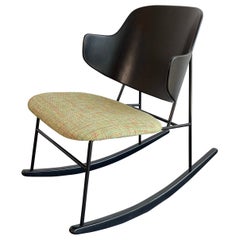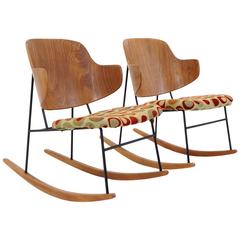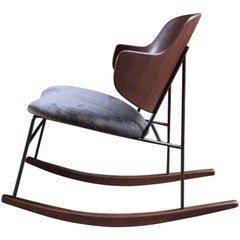Penguin Rocking Chair
Mid-20th Century Danish Scandinavian Modern Rocking Chairs
Steel
Vintage 1950s Danish Scandinavian Modern Chairs
Recent Sales
Vintage 1950s Danish Scandinavian Modern Rocking Chairs
Teak
Vintage 1950s Danish Scandinavian Modern Rocking Chairs
Iron
Vintage 1950s Danish Mid-Century Modern Rocking Chairs
Metal
Vintage 1950s Danish Mid-Century Modern Rocking Chairs
Iron
Vintage 1960s Danish Mid-Century Modern Rocking Chairs
Beech
Mid-20th Century Danish Mid-Century Modern Rocking Chairs
Wrought Iron
Vintage 1950s Mid-Century Modern Rocking Chairs
Metal
Vintage 1950s Danish Scandinavian Modern Rocking Chairs
Iron
People Also Browsed
2010s Italian Modern Chandeliers and Pendants
Metal, Brass
Mid-20th Century Danish Mid-Century Modern Lounge Chairs
Steel
Vintage 1960s Danish Scandinavian Modern Chairs
Wrought Iron
Vintage 1950s Danish Mid-Century Modern Chairs
Wrought Iron
Vintage 1970s Danish Mid-Century Modern Dining Room Chairs
Upholstery, Teak, Bentwood
Ib Kofod-Larsen for sale on 1stDibs
Furniture maker and architect Ib Kofod-Larsen was one of the greatest design minds to emerge from mid-century Denmark, and his impact was felt across the world, especially in the United States. Kofod-Larsen, who is known for his exemplary seating, tables and storage solutions, understood that the attention to detail, quality materials and functional design ethos of the Scandinavian modernism style he followed would become part of a major international movement.
Due to his foresight and innovation, Kofod-Larsen was one of the best-selling Danish designers in the U.S. in the 1950s, when mid-century modernism was at its most popular.
Originally trained as a cabinetmaker, Kofod-Larsen later studied at the Royal Danish Academy of Fine Arts and was most interested in designing practical yet graceful furniture, although he also dabbled in things like wallpaper and textiles. He favored natural grains and woods like teak and rosewood combined with leather, steel and fabric upholsteries to create inviting pieces. Working with manufacturers such as Faarup Møbelfabrik, Christensen & Larsen and Bovenkamp, he brought his sculptural aesthetic to the world.
Some of his seating designs have earned legendary status: The U-56 chair (1956) was renamed the Elizabeth because England’s Queen Elizabeth II is said to have picked up a pair during a 1958 trip to Denmark. With OPE Möbler, he created the Seal chair (1956) with a wooden frame shaped around leather upholstery. The sculptural Penguin chair (1953), produced by Selig and named for its curved back, became Denmark’s most frequently exported piece of furniture to the U.S. at the time. Its bentwood shell echoes the work of Kofod-Larsen’s modernist contemporaries Eero Saarinen and Charles and Ray Eames, while its options as a dining, lounging and rocking chair offer versatility for the home.
As mid-century modern furniture experiences a fresh wave of popularity in the U.S. — although, one could argue that it never really went away — Kofod-Larsen’s timeless pieces are among the most coveted vintage finds. Several of his designs continue to be produced, such as the Penguin chair, which has been manufactured by Brdr. Petersen since 2012.
Find vintage Ib Kofod-Larsen furniture today on 1stDibs.
Finding the Right Rocking-chairs for You
The phrase “rocking chair” didn’t find its way into the dictionary until the mid-18th century. While most of the sitting furniture that we use in our homes originated in either England or France, the iconic rocking chair is a quintessentially American piece of furniture.
A Philadelphia cabinetmaker’s bill for a proto-rocking chair issued in 1742, which identified the seat as a “Nurse Chair with rockers,” is the earliest surviving evidence of this design’s humble beginnings. The nurse chair was a low side chair intended for nursing women, so giving it a soothing rocking motion made sense. Rocking chairs, which saw a curved slat affixed to the chairs’ feet so that they could be literally rocked, quickly gained popularity across the United States, garnering a reputation as a seat that everyone could love. They offered casual comfort without the expensive fabrics and upholstery that put armchairs out of many families’ budgets.
Rocking chairs are unique in that they don’t just offer a place to rest — they offer an opportunity to reminisce. The presence of one of these classic pieces stirs up our penchant for nostalgia and has the power to transform a space. They easily introduce a simple country feel to the city or bring the peaceful rhythm of a porch swing into a sheltered sunroom. Although craftsmen took to painting and stenciling varieties of the chairs that emerged in New England during the 19th century, the most traditional rocking chairs are generally unadorned seats constructed with time-tested materials like wood and metal. As such, a minimalist vintage rocking chair can be ushered into any corner of your home without significantly disrupting your existing decor scheme or the room’s color palette.
In the decades since the first rocker, top designers have made the piece their own. Viennese chair maker Michael Thonet produced a series of rockers in the middle of the 19th century in which the different curved steam-bent wood parts were integrated into fluid, sinuous wholes. Mid-century modernists Charles and Ray Eames added wooden rockers to their famous plastic shell armchair, while Danish designer Frank Reenskaug opted for teak and polished beech, introducing pops of color with small cushions (a precursor to the bold works that would follow in the 1970s and 1980s).
No matter your personal style, let 1stDibs pair you with your perfect seat. Deck out your porch, patio or parlor — browse the vintage, new and antique rocking chairs in our vast collection today.



